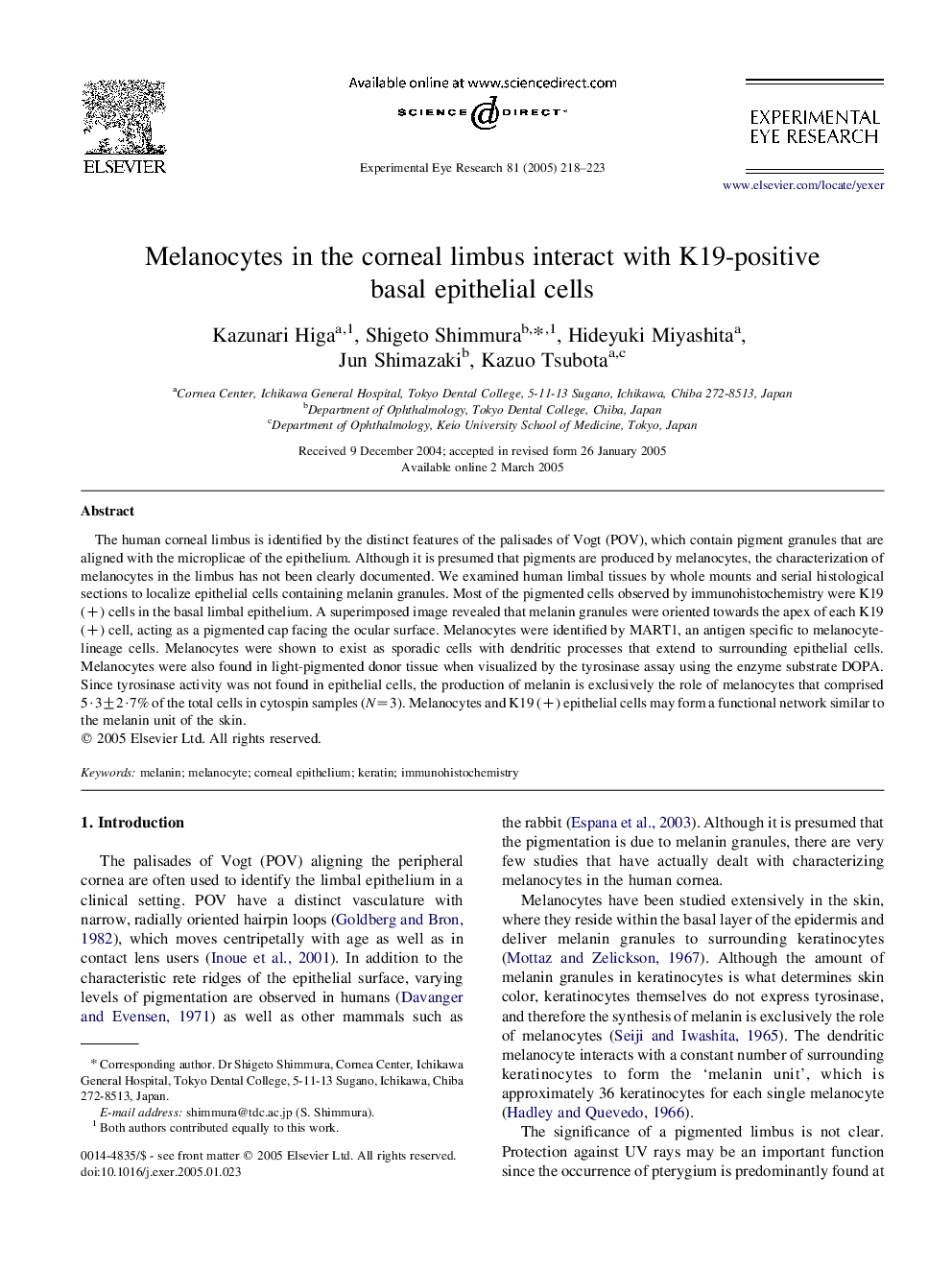| Article ID | Journal | Published Year | Pages | File Type |
|---|---|---|---|---|
| 9341912 | Experimental Eye Research | 2005 | 6 Pages |
Abstract
The human corneal limbus is identified by the distinct features of the palisades of Vogt (POV), which contain pigment granules that are aligned with the microplicae of the epithelium. Although it is presumed that pigments are produced by melanocytes, the characterization of melanocytes in the limbus has not been clearly documented. We examined human limbal tissues by whole mounts and serial histological sections to localize epithelial cells containing melanin granules. Most of the pigmented cells observed by immunohistochemistry were K19 (+) cells in the basal limbal epithelium. A superimposed image revealed that melanin granules were oriented towards the apex of each K19 (+) cell, acting as a pigmented cap facing the ocular surface. Melanocytes were identified by MART1, an antigen specific to melanocyte-lineage cells. Melanocytes were shown to exist as sporadic cells with dendritic processes that extend to surrounding epithelial cells. Melanocytes were also found in light-pigmented donor tissue when visualized by the tyrosinase assay using the enzyme substrate DOPA. Since tyrosinase activity was not found in epithelial cells, the production of melanin is exclusively the role of melanocytes that comprised 5·3±2·7% of the total cells in cytospin samples (N=3). Melanocytes and K19 (+) epithelial cells may form a functional network similar to the melanin unit of the skin.
Related Topics
Life Sciences
Immunology and Microbiology
Immunology and Microbiology (General)
Authors
Kazunari Higa, Shigeto Shimmura, Hideyuki Miyashita, Jun Shimazaki, Kazuo Tsubota,
